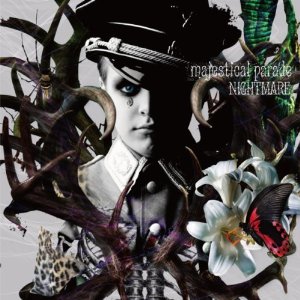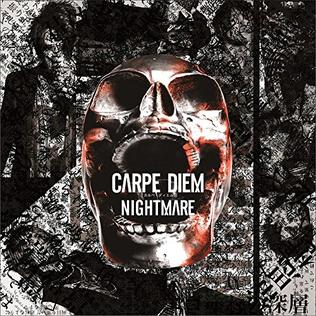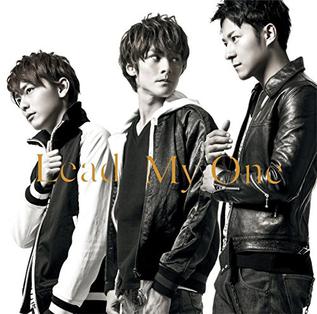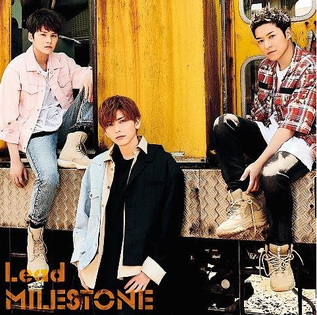
The English rock group The Rolling Stones have released 31 studio albums, 13 live albums, 28 compilation albums, 3 extended plays, 122 singles, 31 box sets, 51 video albums, 2 video box sets and 77 music videos. Throughout their career, they have sold over 200 million records worldwide, making them one of the best-selling music artists of all time. Billboard ranked them as the 2nd Greatest artist of all time. The Rolling Stones have scored 37 top-10 albums on the Billboard 200 and 8 No. 1 hits on the Billboard Hot 100. According to the Recording Industry Association of America, they have sold 66.5 million albums in the US, making them the 16th best-selling group in history.

Killer Show is Nightmare's fifth studio album. It was released May 21, 2008 in three different versions: one with just a CD; one with a CD+DVD; and a limited edition with a CD+DVD and a photo book. The album peaked at #5 in the Oricon Charts. The eleventh song, White Room, was released as a limited single download on their homepage.

Majestical Parade is Nightmare's sixth full-length studio album. Three different versions of this album were released: one with just the CD; one with a CD+DVD; and one with a CD+DVD and a photo book. The sixth song, MELODY, was released as a limited single download on the DWANGO homepage. The album reached #3 in the Oricon Charts.

Japonesque is the tenth studio album by Japanese recording artist Kumi Koda. It was released on January 25, 2012 by Rhythm Zone. It was also released just a little under a year after her 2011 album, Dejavu. Japonesque marks Koda's tenth consecutive studio album to be produced by Japanese producer and manager Max Matsuura, amongst many other producers, while she contributes to the album as the lead vocalist, background vocalist, and songwriter to majority of the songs. Recorded in Japanese with minor phrases in English language, Japonesque is a Japanese pop album with numerous musical elements such as dance music, R&B, electronica, and rock music.
"Be Mine" is a song released by the South Korean boy band Infinite. The song is the title track of the group's first studio album Over the Top, released on July 21, 2011. The song is also the second Japanese single of the group. It was released on April 18, 2012 in 4 different editions.

"Scream" is a song recorded by South Korean girl group 2NE1. It was released through YGEX alongside the group's Japanese compilation album Collection on March 28, 2012, and marked the first and only original Japanese song by the group. "Scream" serves as the second single promoted off the record after "Go Away", which was released in November 2011. A remix of the song by M-Flo was released digitally on Recochoku on March 14, 2012, before the single itself was released on March 28. A recording of "Scream" in Korean was included on the tracklist of 2NE1's second studio album Crush, which was released in February 2014.
Nightmare is a Japanese visual kei rock band formed in January 2000. they have released eleven studio albums, four compilation albums and twenty-eight singles. Most of their albums and singles have been released in three formats—two with bonus DVDs and one CD only.

Nightmare is the seventh studio album from the Japanese band Nightmare. Like all the band's recent releases, this album was released in three different editions, each with different artwork. The 2 limited edition albums contain bonus DVD tracks, while the regular edition includes a bonus track titled "Dazzle". The album peaked at #10 in the Oricon charts and sold 16,971 copies in the first week.

SCUMS is the eighth studio album from the Japanese band Nightmare. Like all the band's recent releases, this album was released in three different editions, each with different artwork. The 2 limited edition albums each contain a different bonus DVD track and the standard contains two extra tracks. The album peaked at #8 in the Oricon charts.

The Best is the first Japanese compilation album by South Korean girl group Girls' Generation. It was released on July 23, 2014, in Japan through EMI Records Japan. The album was released in three different editions, regular and two limited, with the latter containing a DVD or Blu-ray, an extra CD and a photobook. The album originally contains all of the group's previous Japanese singles, while including a previously unreleased Japanese version of "Mr.Mr." and an original track, titled "Indestructible".

With is the eighth Japanese studio album by South Korean pop duo Tohoshinki, released by Avex Trax on December 17, 2014. The record was released in four physical versions – Version A, a CD+DVD version with music videos and live performances; Version B, another CD+DVD version with off-shot movies; Version C, a CD only version with two bonus tracks; and Version D, a fan club limited edition with a CD-Extra. Recording and writing for the album roughly began in the summer of 2013. With is described to be an album composed of nostalgic dance-pop songs that are influenced by disco and jazz, accompanied by marching drumbeats. Its lyrical content explores the general concept of love and friendship.

Wake Up is the first Japanese and second overall studio album by South Korean boy band BTS. It was released in Japan on December 24, 2014, through Pony Canyon. The 13-track album includes Japanese versions of the band's Korean singles "No More Dream", "Boy in Luv", and "Danger"—all of which were released in the months prior as physical Japanese singles—and two new, original Japanese songs: "The Stars" and "Wake Up". The album became BTS' highest-charting and best-selling album in Japan at the time, following its debut at number three on the Oricon Albums Chart, and sales of over 28,000 copies.

Carpe Diem is Nightmare's tenth full-length studio album. As with all of their recent album and single releases, it came in three different versions, each with different artwork. The two limited editions, each come with different DVD tracks while the standard edition came with one extra song. The album peaked #7 in the Oricon charts.

The Showcase is the seventh studio album by the Japanese hip-hop group Lead. The album became their highest ranking album since their debut, peaking at #2 on the Oricon charts and remaining on the charts for five weeks. The album consisted of seven preluding singles, the first being Still in December 2012 and the last being Yakusoku, released three years later on November 25, 2015.

Now or Never is the sixth studio album by Japanese hip-hop group Lead. It was their first album to chart in the top ten on the Oricon charts since their debut album Life On Da Beat (2003) coming in at #6 and remaining on the charts for two weeks.

"Green Days" / "Strings" is the twenty-second single by Japanese hip hop group Lead, released on September 18, 2013. The single continued their top-charting releases, reaching No. 4 for the week and remaining on the chart for four weeks.

My One is the twenty-fifth single by the Japanese hip-hop group Lead, becoming their first release of 2015 on March 4, 2015. The single continued their string of top releases, taking the #6 slot for the week on Oricon and remaining on the charts for three weeks.

Milestone is the eighth studio album released by the Japanese hip-hop group Lead on July 18, 2018, released over two years after their previous album The Showcase.

Yakusoku is the twenty-sixth single by the Japanese hip-hop group Lead, and was the final single before the release of their studio album The Showcase (2016). It performed well on Oricon at #5 and remained on the charts for two weeks.

Hurricane is the eighteenth single released by the Japanese hip-hop group Lead. It was their first single of 2011, released a year after their previous single Speed Star. The peaked at #8 on the Oricon charts, where it stayed for three weeks. The single became their first single to chart in the top ten on Oricon since their 2006 single Virgin Blue.


















